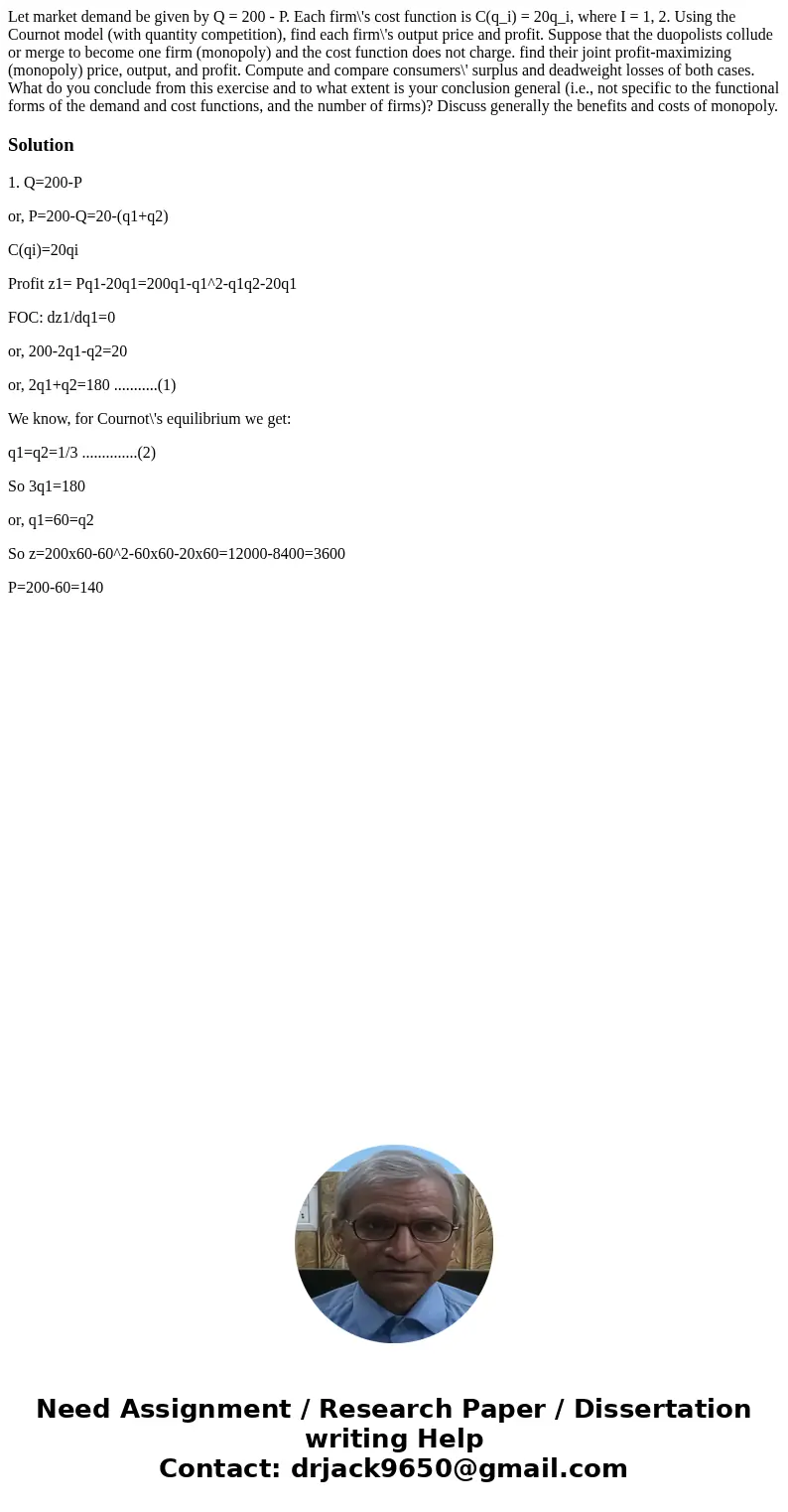Let market demand be given by Q 200 P Each firms cost func
Let market demand be given by Q = 200 - P. Each firm\'s cost function is C(q_i) = 20q_i, where I = 1, 2. Using the Cournot model (with quantity competition), find each firm\'s output price and profit. Suppose that the duopolists collude or merge to become one firm (monopoly) and the cost function does not charge. find their joint profit-maximizing (monopoly) price, output, and profit. Compute and compare consumers\' surplus and deadweight losses of both cases. What do you conclude from this exercise and to what extent is your conclusion general (i.e., not specific to the functional forms of the demand and cost functions, and the number of firms)? Discuss generally the benefits and costs of monopoly. 
Solution
1. Q=200-P
or, P=200-Q=20-(q1+q2)
C(qi)=20qi
Profit z1= Pq1-20q1=200q1-q1^2-q1q2-20q1
FOC: dz1/dq1=0
or, 200-2q1-q2=20
or, 2q1+q2=180 ...........(1)
We know, for Cournot\'s equilibrium we get:
q1=q2=1/3 ..............(2)
So 3q1=180
or, q1=60=q2
So z=200x60-60^2-60x60-20x60=12000-8400=3600
P=200-60=140

 Homework Sourse
Homework Sourse